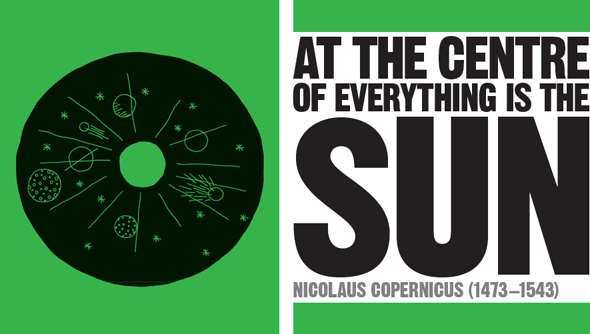
IN CONTEXT
Astronomy
3rd century BCE In a work called The Sand Reckoner, Archimedes reports the ideas of Aristarchus of Samos, who proposed that the Universe was much larger than commonly believed, and that the Sun was at its centre.
150 CE Ptolemy of Alexandria uses mathematics to describe a geocentric (Earth-centred) model of the Universe.
1609 Johannes Kepler resolves the outstanding conflicts in the heliocentric (Sun-centred) model of the Solar System by proposing elliptical orbits.
1610 After observing the moons of Jupiter, Galileo becomes convinced that Copernicus was right.
Throughout its early history, Western thought was shaped by an idea of the Universe that placed Earth at the centre of everything. This “geocentric model” seemed at first to be rooted in everyday observations and common sense – we do not feel any motion of the ground on which we stand, and superficially there seems to be no observational evidence that our planet is in motion either. Surely the simplest explanation was that the Sun, Moon, planets and stars were all spinning around Earth at different rates? This system appears to have been widely accepted in the ancient world, and became entrenched in classical philosophy through the works of Plato and Aristotle in the 4th century BCE.
However, when the ancient Greeks measured the movements of the planets, it became clear that the geocentric system had problems. The orbits of the known planets – five wandering lights in the sky – followed complex paths. Mercury and Venus were always seen in the morning and evening skies, describing tight loops around the Sun. Mars, Jupiter, and Saturn, meanwhile, took 780 days, 12 years, and 30 years respectively to circle against the background stars, their motion complicated by “retrograde” loops in which they slowed and temporarily reversed the general direction of their motion.
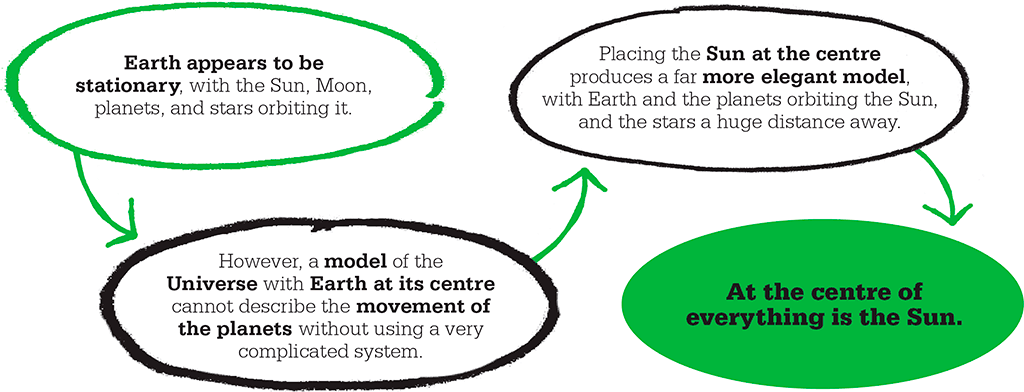
"If the Lord Almighty had consulted me before embarking on creation thus, I should have recommended something simpler."
Alfonso X
King of Castile
Ptolemaic system
To explain these complications, Greek astronomers introduced the idea of epicycles – “sub-orbits” around which the planets circled as the central “pivot”-points of the sub-orbits were carried around the Sun. This system was best refined by the great Greco-Roman astronomer and geographer Ptolemy of Alexandria in the 2nd century CE.
Even in the classical world, however, there were differences of opinion – the Greek thinker Aristarchus of Samos, for instance, used ingenious trigonometric measurements to calculate the relative distances of the Sun and Moon in the 3rd century BCE. He found that the Sun was huge, and this inspired him to suggest that the Sun was a more likely pivot-point for the motion of the cosmos.
However, the Ptolemaic system ultimately won out over rival theories, with far-reaching implications. While the Roman Empire dwindled in subsequent centuries, the Christian Church inherited many of its assumptions. The idea that Earth was the centre of everything, and that man was the pinnacle of God’s creation, with dominion over Earth, became a central tenet of Christianity and held sway in Europe until the 16th century.
However, this does not mean that astronomy stagnated for a millennium and a half after Ptolemy. The ability to accurately predict the movements of the planets was not only a scientific and philosophical puzzle, but also had supposed practical purposes thanks to the superstitions of astrology. Stargazers of all persuasions had good reason to attempt ever more accurate measurements of the motions of the planets.
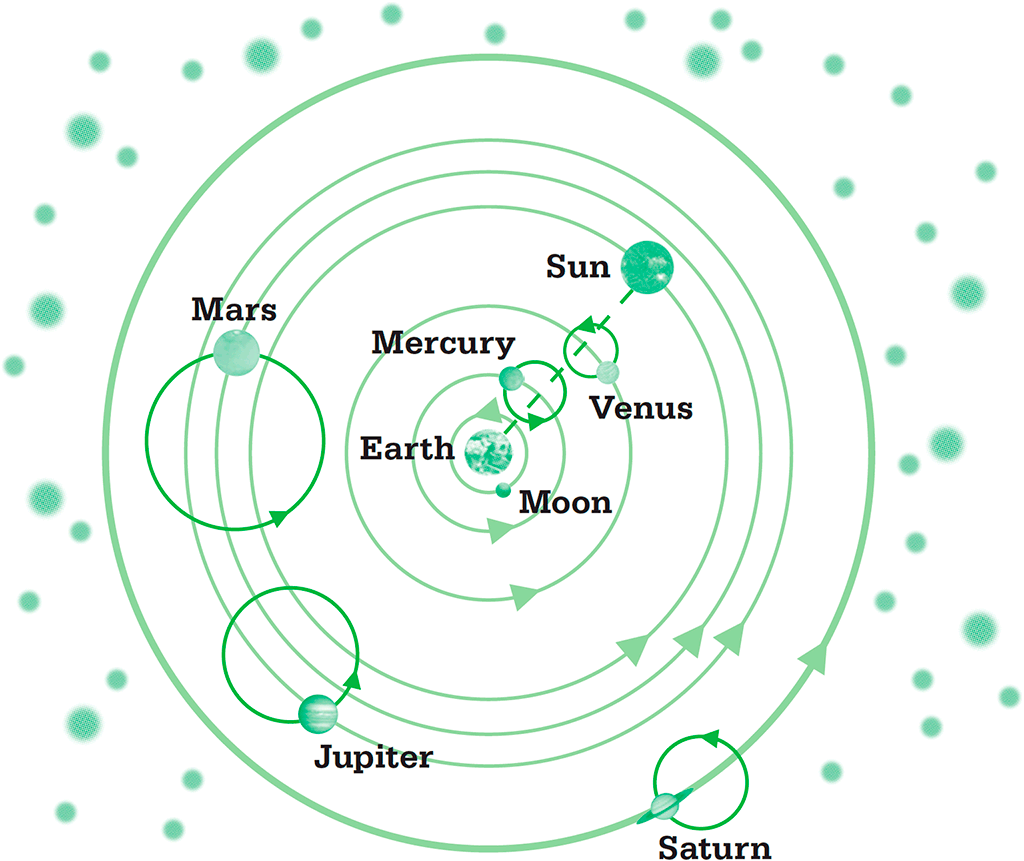
Ptolemy’s model of the Universe has Earth unmoving at the centre, with the Sun, Moon, and the five known planets following circular orbits around it. To make their orbits agree with observations, Ptolemy added smaller epicycles to each planet’s movement.
Arabic scholarship
The later centuries of the first millennium corresponded with the first great flowering of Arabic science. The rapid spread of Islam across the Middle East and North Africa from the 7th century brought Arab thinkers into contact with classical texts, including the astronomical writings of Ptolemy and others.
The practice of “positional astronomy” – calculating the positions of heavenly bodies – reached its apogee in Spain, which had become a dynamic melting pot of Islamic, Jewish, and Christian thought. In the late 13th century, King Alfonso X of Castile sponsored the compilation of the Alfonsine Tables, which combined new observations with centuries of Islamic records to bring new precision to the Ptolemaic system and provide the data that would be used to calculate planetary positions until the early 17th century.
Questioning Ptolemy
However, by this point the Ptolemaic model was becoming absurdly complicated, with yet further epicycles added to keep prediction in line with observation. In 1377, French philosopher Nicole Oresme, Bishop of Lisieux, addressed this problem head-on in the work Livre du Ciel et du Monde (Book of the Heavens and the Earth). He demonstrated the lack of observational proof that Earth was static, and argued that there was no reason to suppose that it was not in motion. Yet, despite his demolition of the evidence for the Ptolemaic system, Oresme concluded that he did not himself believe in a moving Earth.
By the beginning of the 16th century, the situation had become very different. The twin forces of the Renaissance and the Protestant Reformation saw many old religious dogmas opened up to question. It was in this context that Nicolaus Copernicus, a Polish Catholic canon from the province of Warmia, put forward the first modern heliocentric theory, shifting the centre of the Universe from Earth to the Sun.
Copernicus first published his ideas in a short pamphlet known as the Commentariolus, circulated among friends from around 1514. His theory was similar in essence to the system proposed by Aristarchus, and while it overcame many of the earlier model’s failings, it remained deeply attached to certain pillars of Ptolemaic thought – most significantly the idea that the orbits of celestial objects were mounted on crystalline spheres that rotated in perfect circular motion. As a result, Copernicus had to introduce “epicycles” of his own in order to regulate the speed of planetary motions on certain parts of their orbits. One important implication of his model was that it vastly increased the size of the Universe. If Earth was moving around the Sun, then this should give itself away through parallax effects caused by our changing point of view: the stars should appear to shift back and forth across the sky throughout the year. Because they do not do so, they must be very far away indeed.
The Copernican model soon proved itself far more accurate than any refinement of the old Ptolemaic system, and word spread among intellectual circles across Europe. Notice even reached Rome, where, contrary to popular belief, the model was at first welcomed in some Catholic circles. The new model caused enough of a stir for German mathematician Georg Joachim Rheticus to travel to Warmia and become Copernicus’s pupil and assistant from 1539.
It was Rheticus who published the first widely circulated account of the Copernican system, known as the Narratio Prima, in 1540. Rheticus urged the ageing priest to publish his own work in full – something that Copernicus had contemplated for many years, but only conceded to in 1543 as he lay on his deathbed.
"Since the Sun remains stationary, whatever appears as a motion of the Sun is due to the motion of the Earth."
Nicolaus Copernicus
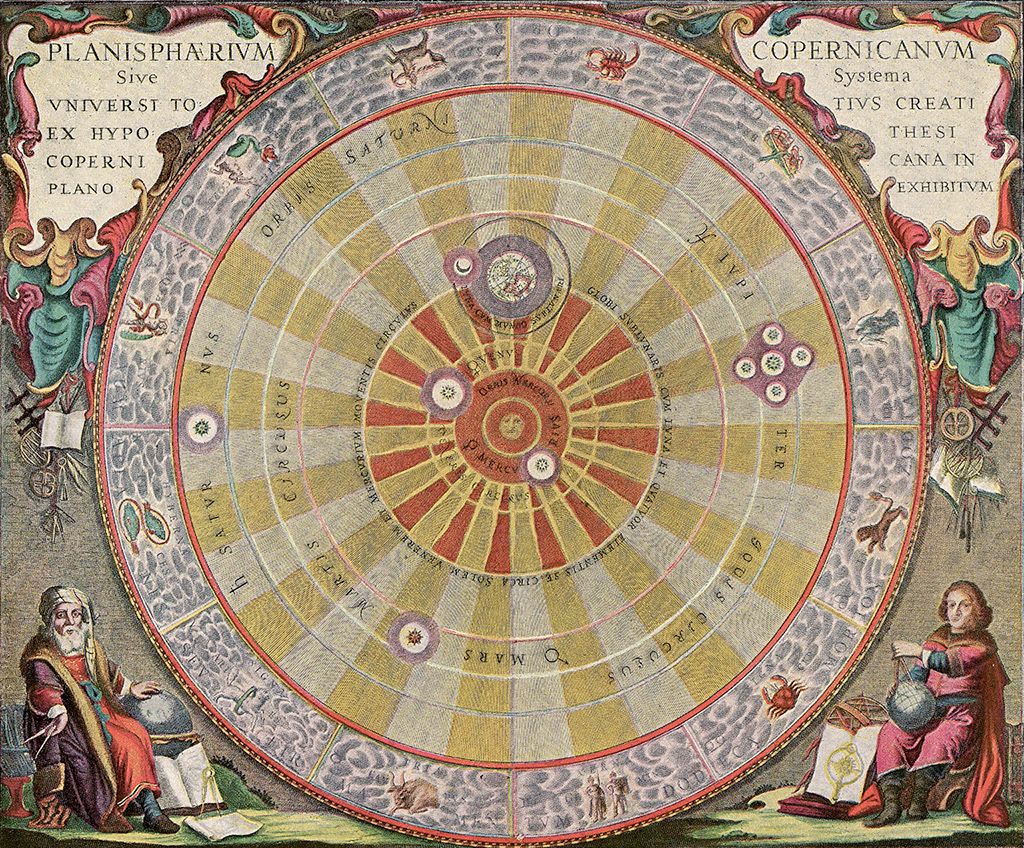
This 17th-century illustration of the Copernican system shows the planets in circular orbits around the Sun. Copernicus believed that the planets were attached to heavenly spheres.
Mathematical tool
Published posthumously, De Revolutionibus Orbium Coelestium (On the Revolutions of the Heavenly Spheres) was not initially greeted with outrage, even though any suggestion that Earth was in motion directly contradicted several passages of Scripture and was therefore regarded as heretical by both Catholic and Protestant theologians. To sidestep the issue, a preface had been inserted that explained the heliocentric model as purely a mathematical tool for prediction, not a description of the physical Universe. In his life, however, Copernicus himself had shown no such reservations. Despite its heretical implications, the Copernican model was used for the calculations involved in the great calendar reform introduced by Pope Gregory XIII in 1582.
However, new problems with the model’s predictive accuracy soon began to emerge, thanks to the meticulous observations of the Danish astronomer Tycho Brahe (1546–1601), which showed that the Copernican model did not adequately describe planetary motions. Brahe attempted to resolve these contradictions with a model of his own in which the planets went around the Sun but the Sun and Moon remained in orbit around Earth. The real solution – that of elliptical orbits – would only be found by his pupil Johannes Kepler.
It would be six decades before Copernicanism became truly emblematic of the split caused in Europe by the Reformation of the Church, thanks largely to the controversy surrounding Italian scientist Galileo Galilei. Galileo’s 1610 observations of the phases displayed by Venus and the presence of moons orbiting Jupiter convinced him that the heliocentric theory was correct, and his ardent support for it, from the heart of Catholic Italy, was ultimately expressed in his Dialogue Concerning the Two Chief World Systems (1632). This led Galileo into conflict with the papacy, one result of which was the retrospective censorship of controversial passages in De Revolutionibus in 1616. This prohibition would not be lifted for more than two centuries.
"As though seated on a royal throne, the Sun governs the family of planets revolving around it."
Nicolaus Copernicus
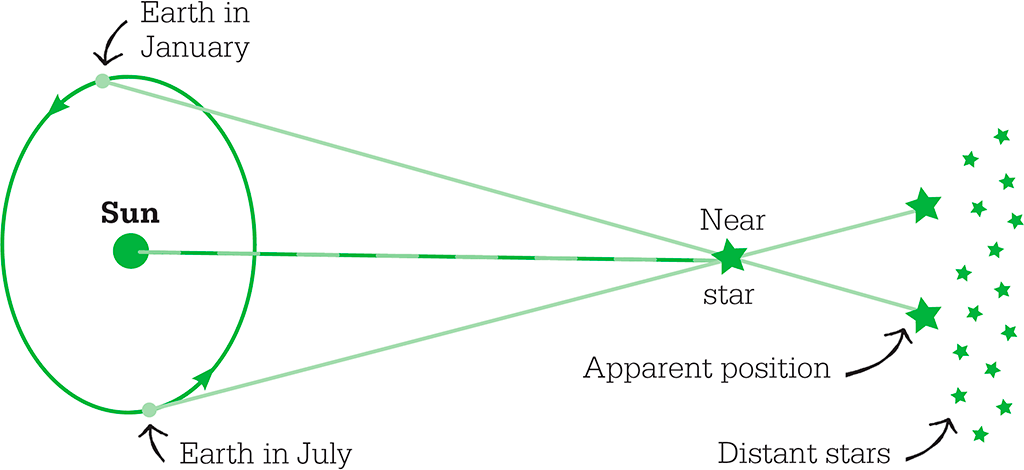
As Earth moves around the Sun, the apparent position of stars at different distances changes due to an effect called parallax. As the stars are so far away, the effect is small and can only be detected using telescopes.
NICOLAUS COPERNICUS

Born in the Polish city of Torun in 1473, Nicolaus Copernicus was the youngest of four children of a wealthy merchant. His father died when Nicolaus was 10. An uncle took him under his wing and oversaw his education at the University of Krakow. He spent several years in Italy studying medicine and law, returning in 1503 to Poland, where he joined the canonry under his uncle, who was now Prince-Bishop of Warmia.
Copernicus was a master of both languages and mathematics, translating several important works and developing ideas about economics, as well as working on his astronomical theories. The theory he outlined in De Revolutionibus was daunting in its mathematical complexity, so while many recognized its significance, it was not widely adopted by astronomers for practical everyday use.
Key works
1514 Commentariolus
1543 De Revolutionibus Orbium Coelestium (On the Revolutions of the Heavenly Spheres)
See also: Zhang Heng • Johannes Kepler • Galileo Galilei • William Herschel • Edwin Hubble